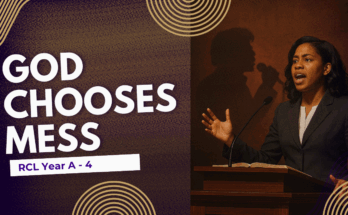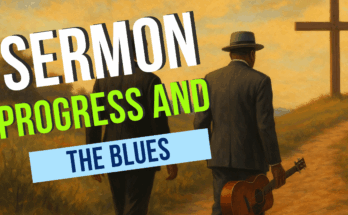As an Amazon Associate I earn from qualifying purchases.
In the sermon, people will often turn you off if you don’t have a strong start. They will leave (either mentally or physically) if the middle doesn’t have places to capture their attention. But they will not remember anything if the end is not strong. There is a great need for a strong ending if we are to affect the daily lives of our parishioners.
How to Have a Strong Ending?
But how can you provide a strong ending? I have often talked about the need to have a celebration at the end of the sermon. This is very important. However HOW do you celebrate? One important way is, as Eugene Lowry presents in his work entitled The Homiletical Plot: The Sermon as Narrative Art Form is to skillfully use ambiguity in your sermon.
The sermon can be seen as introducing ambiguity in the sermon in the beginning. This will arise curiosity. It will grab the attention of the hearer as they wonder how this ambiguity will be resolved. The preacher introduces a delima in daily life. The attempts to live a godly life in the midst of a world that punishes godliness is fertile ground for this kind of analysis.
Using Ambiguity and Faulty Options
Then after introducing the ambiguity, you can talk about various options for the resolution in the sermon. You might talk about difficulties of these options. These may be common options that you have seen taken in your own congregation or through other observations. Maybe faulty options taken by yourself can be options that fall short of God’s ideal.
Then finally, the resolution comes. This resolution may not solve all the issue. Sometimes the resolution is simply a trust that perseveres through the difficulties. Sometimes the resolution is a solving of the problem. But in any case, this resolution provides the great “ahhh” moment of the sermon. So you have introduced a problem that got the people on board for this was a real problem that they experience in daily lives. Then you provide options that they have tried in their own lives and show why they come short of the resolution requirements. Then you provide the resolution. And as people are reveling in the realization of God’s resolution to their problem, then you celebrate the truth that was just revealed in the resolution.
Why the People Remember
Then the people go home, having heard one of their real problems. They have “discussed” as it were, various approaches to the problem and why they are problematic. And then they have heard and experienced the answer. Then the celebrated it. Now they are equipped to go live the life that God has called them to live. This is not an approach that should be taken every week. We cannot and should not always lead with a problem in our sermons, but it is a powerful way to answer real problems in the lives of your congregation.
I would encourage you to sign up for the “Supercharge Your Sermons” system to find out more about closing the sermon. This is one of the important components of a Supercharged Sermon.
Amazon and the Amazon logo are trademarks of Amazon.com, Inc, or its affiliates.






God bless you!!!!!!! You seem to be and awseome man off god. Thanks for the great tips on starting to preach a sermon and to end a sermon. Llisten i wan t u to stay in his will and keep on doing what your doing for you shall be great in his kingdom., have a good day